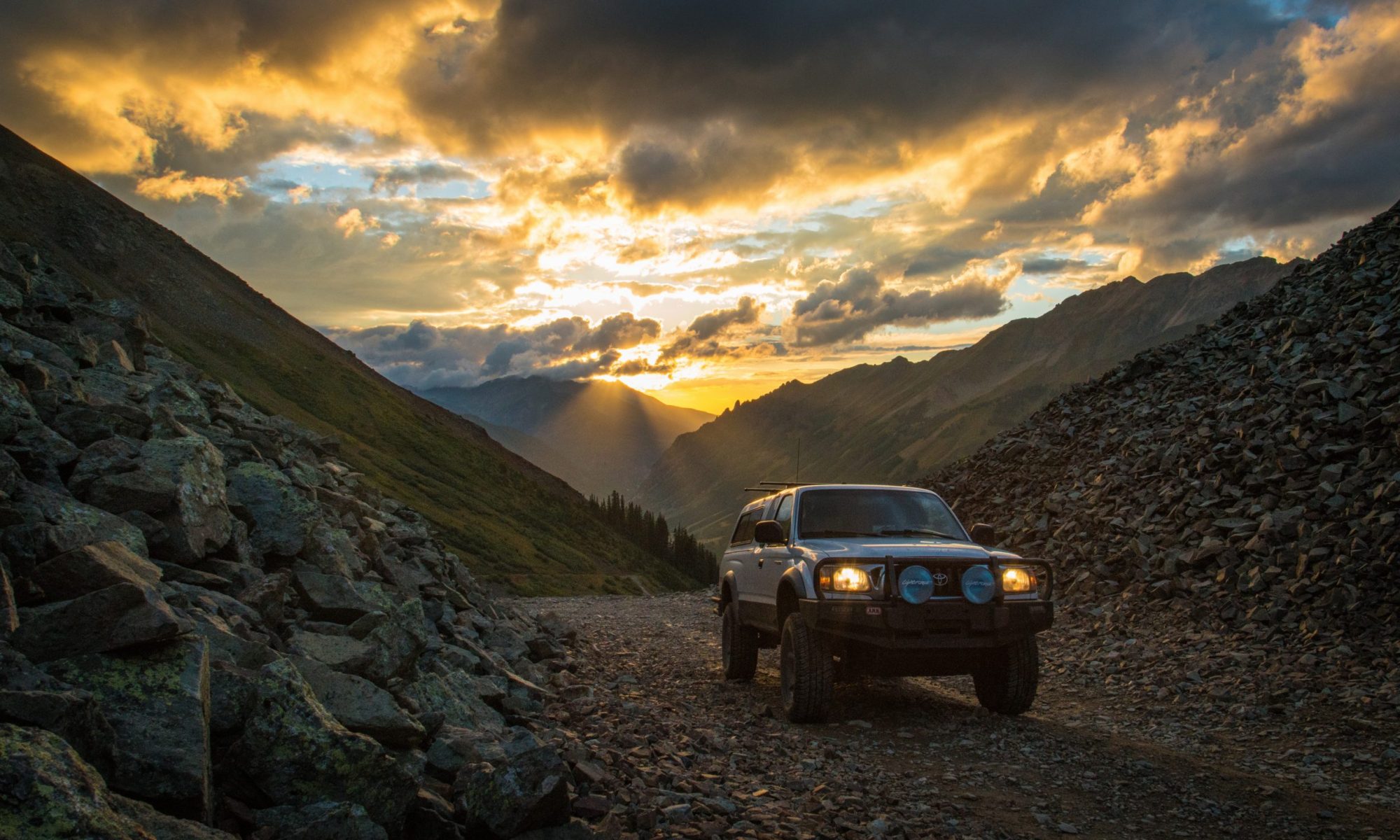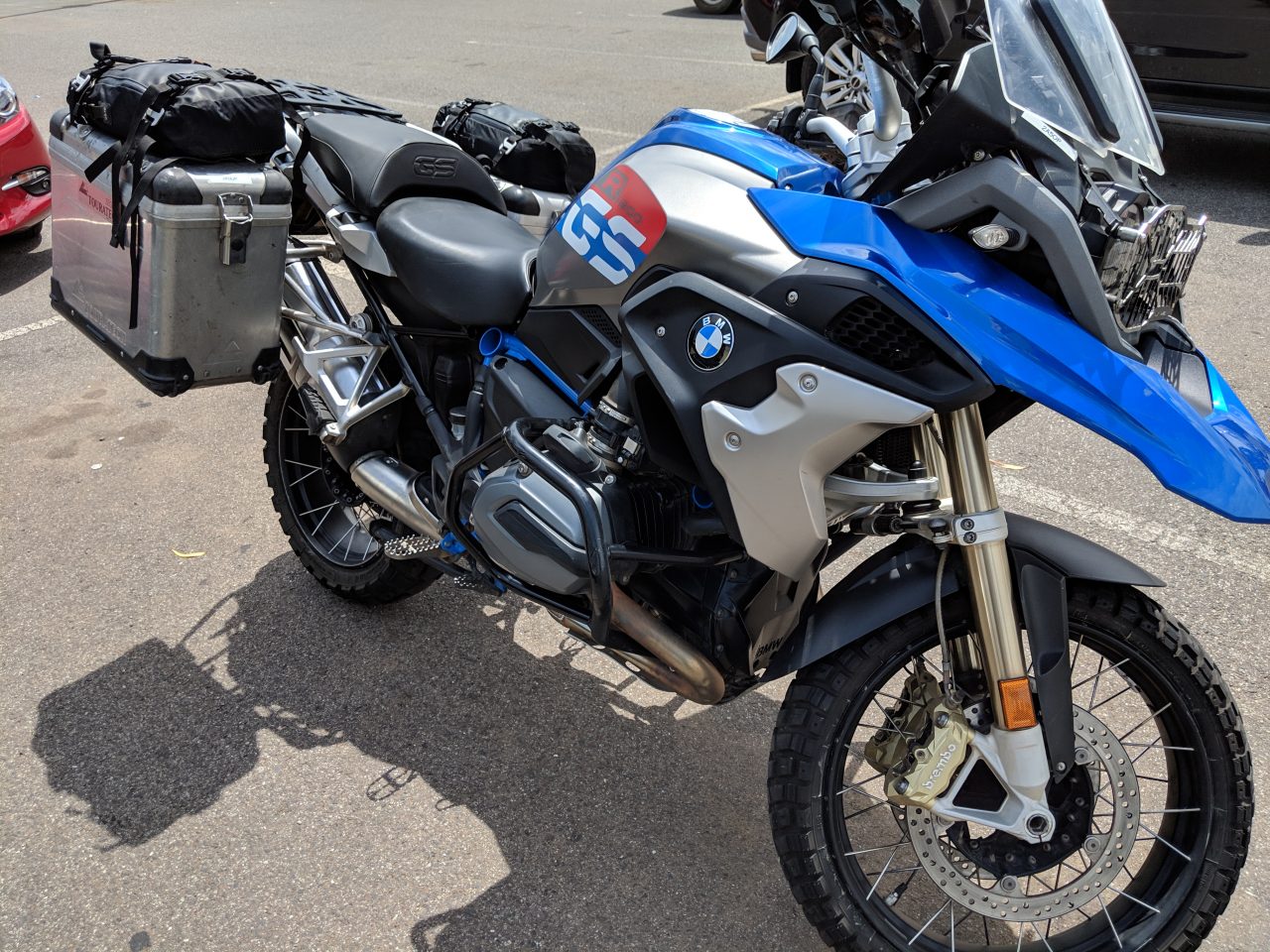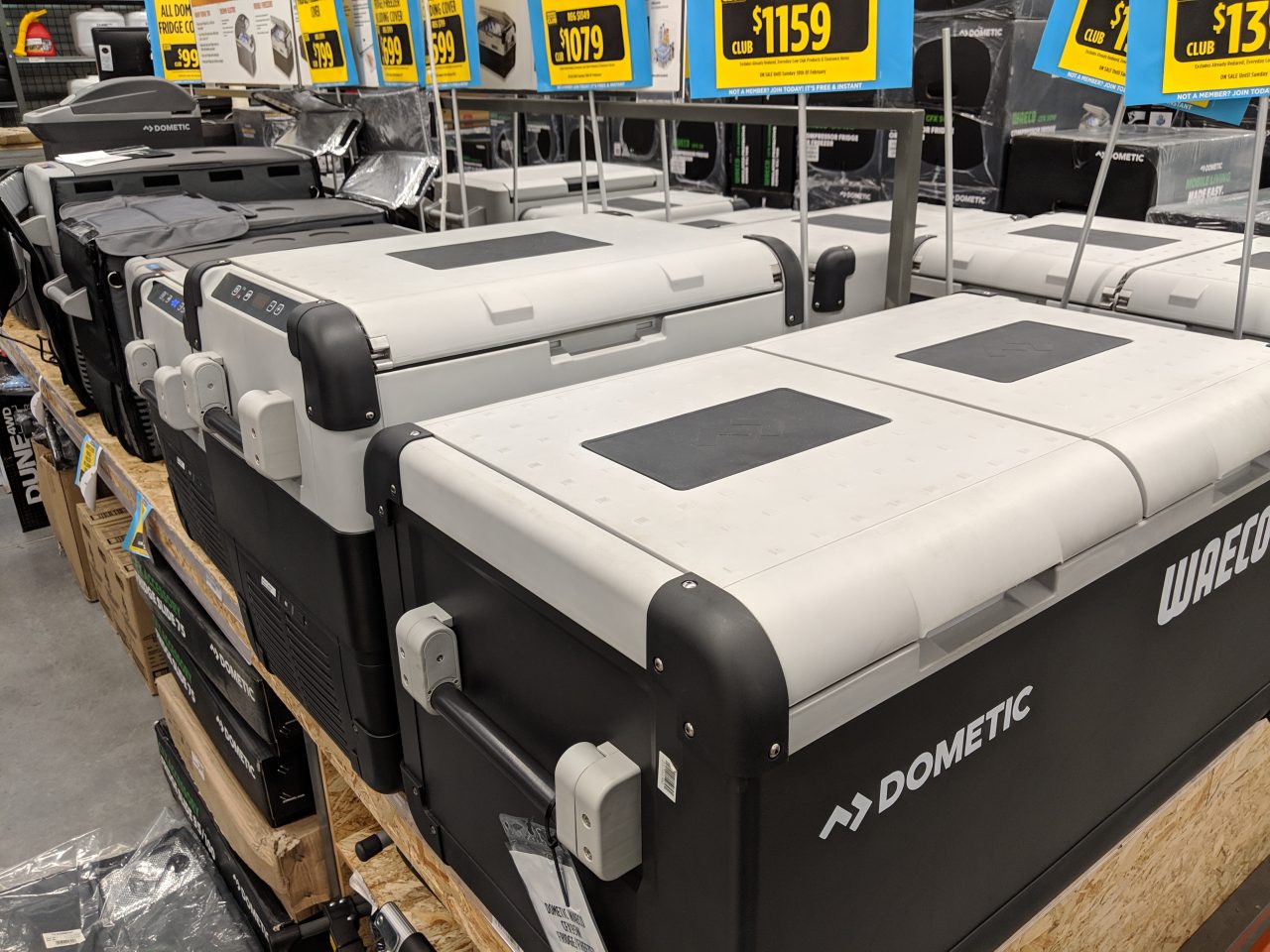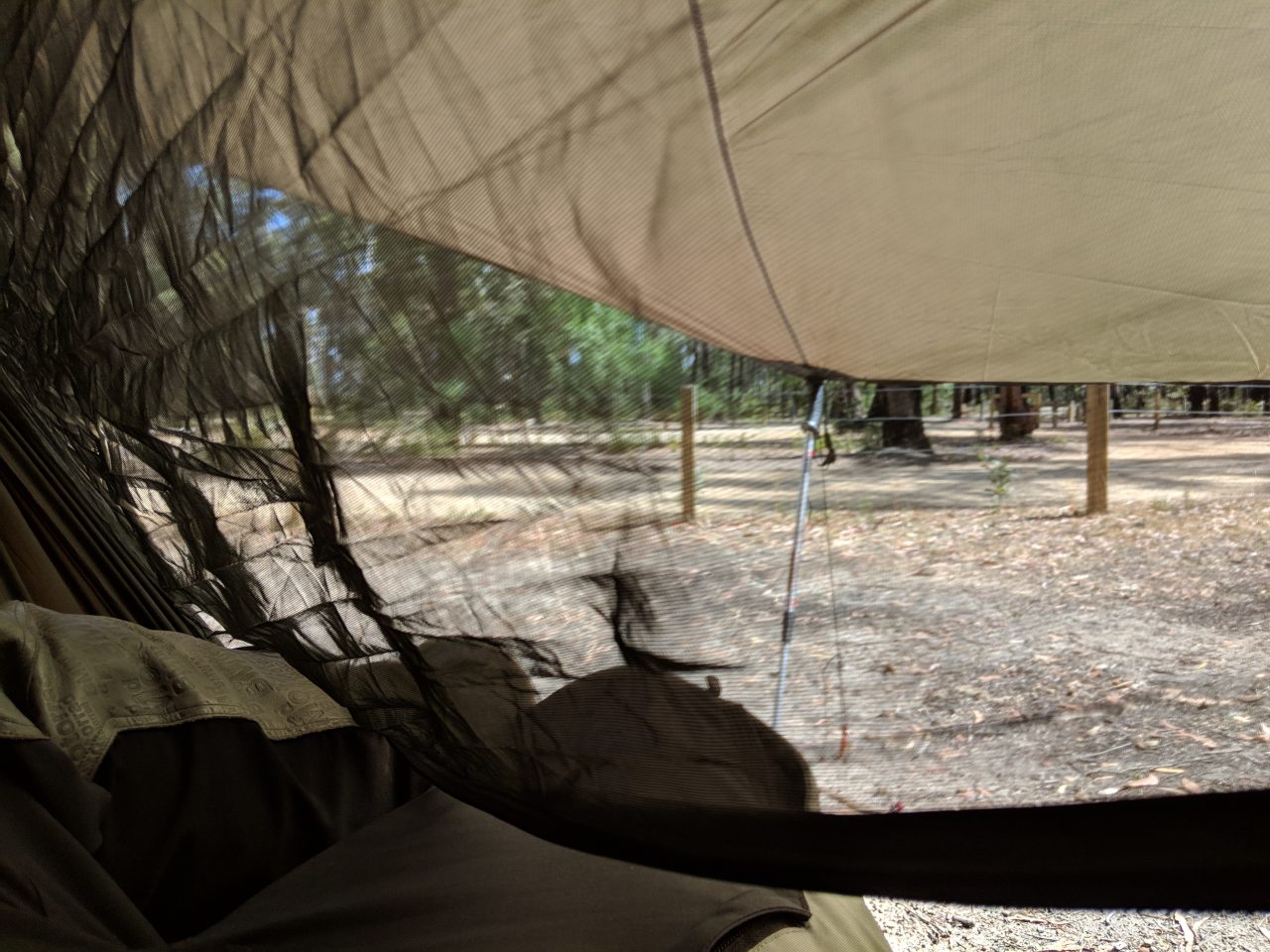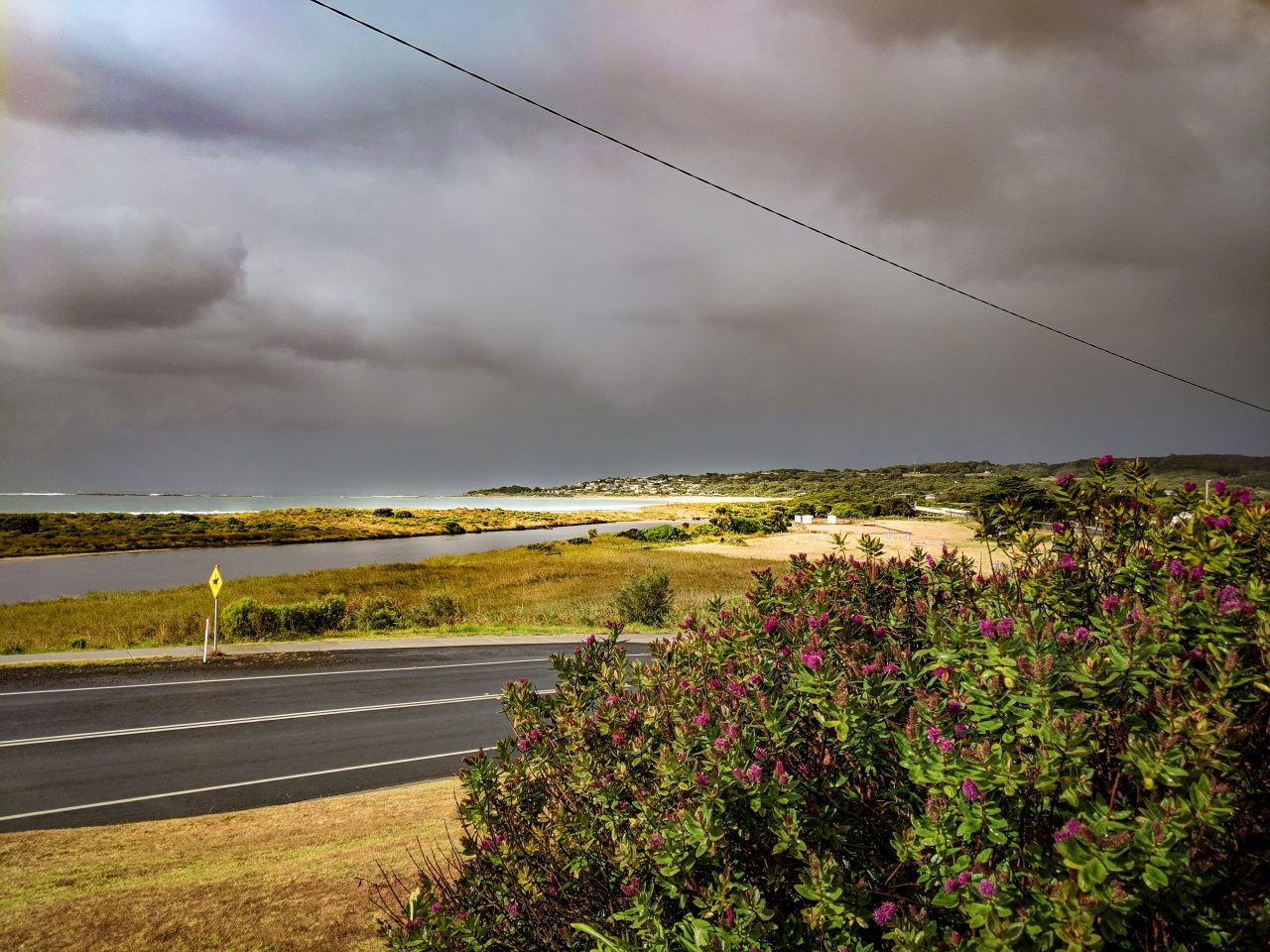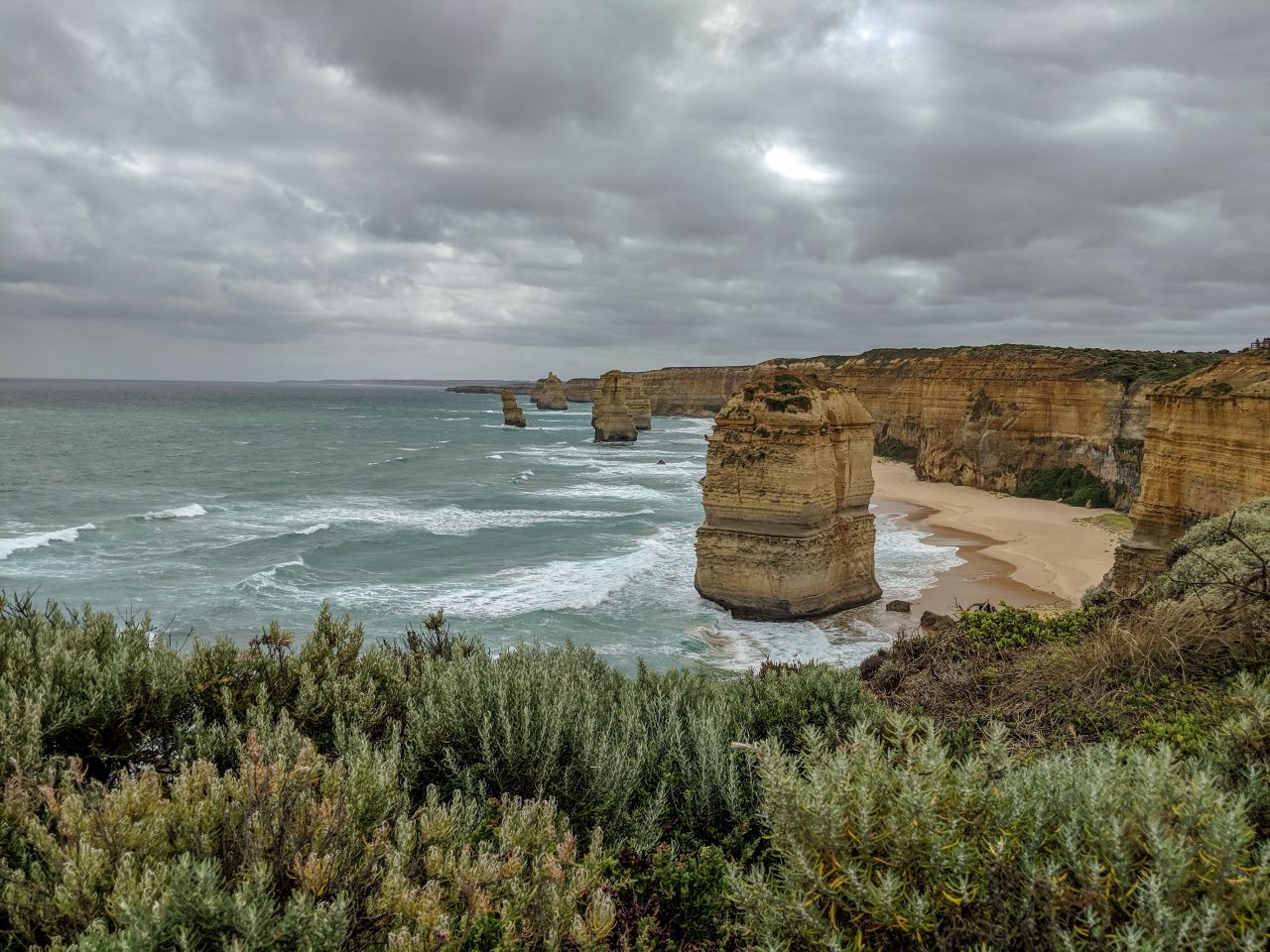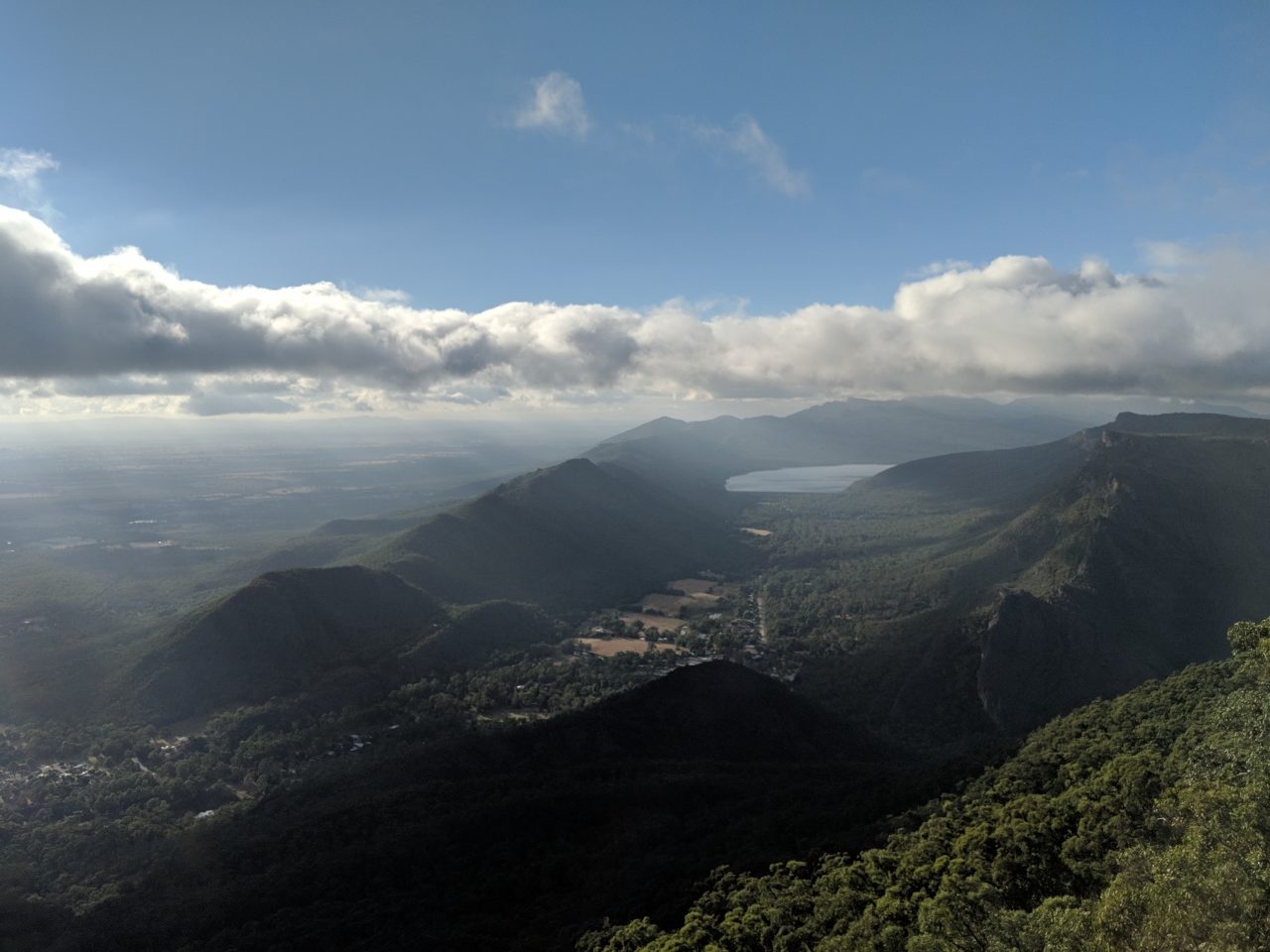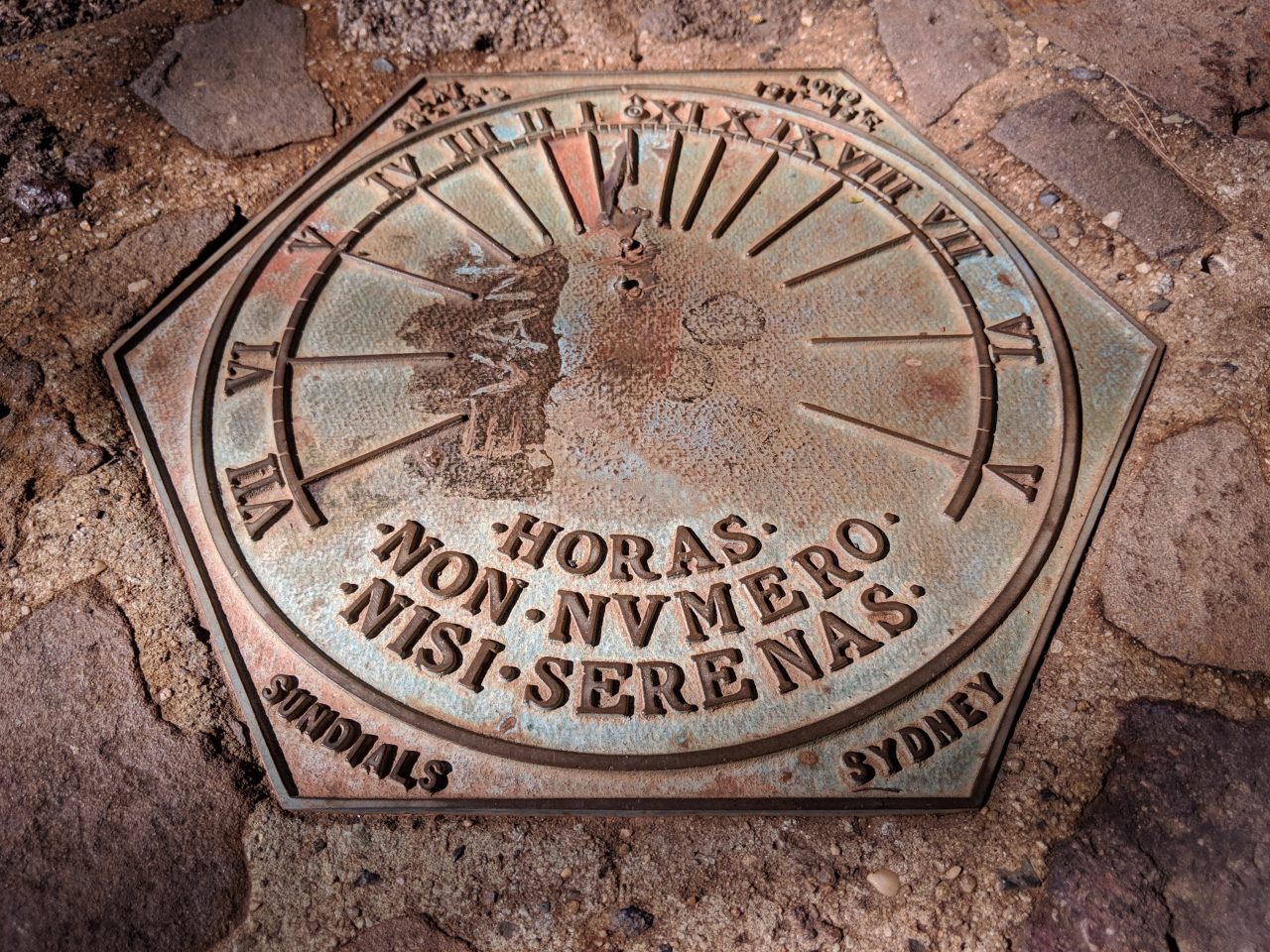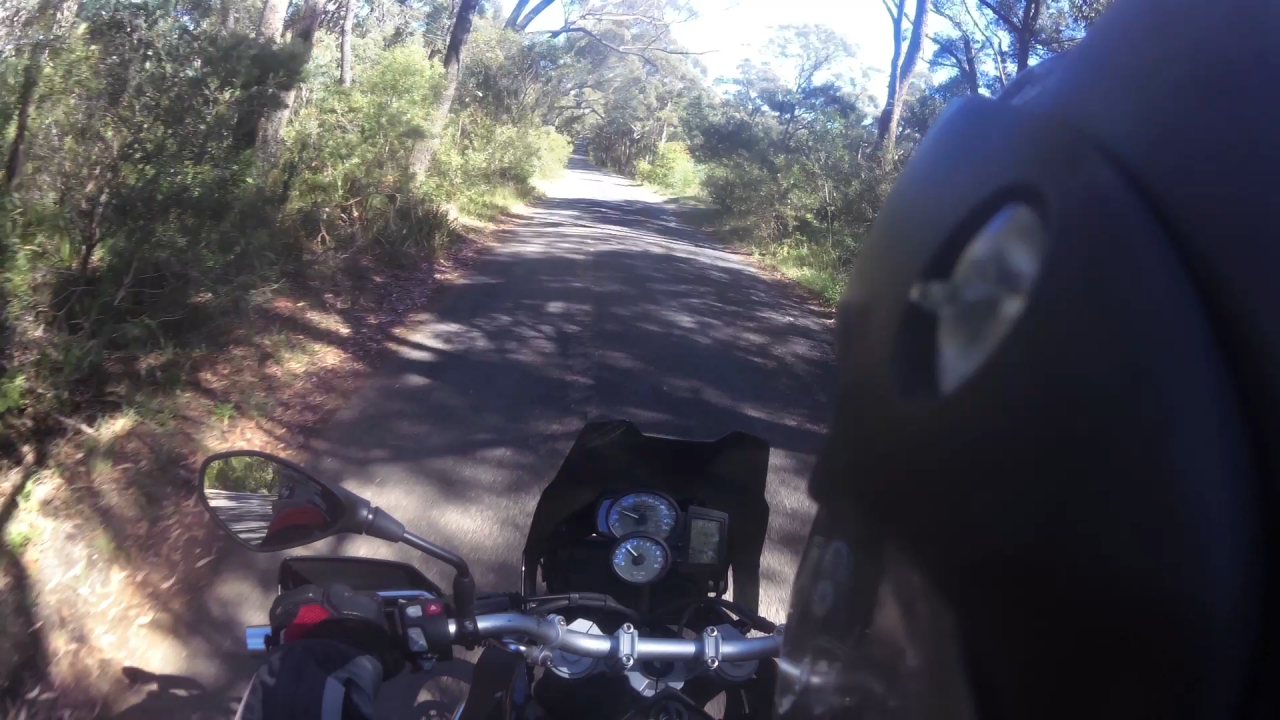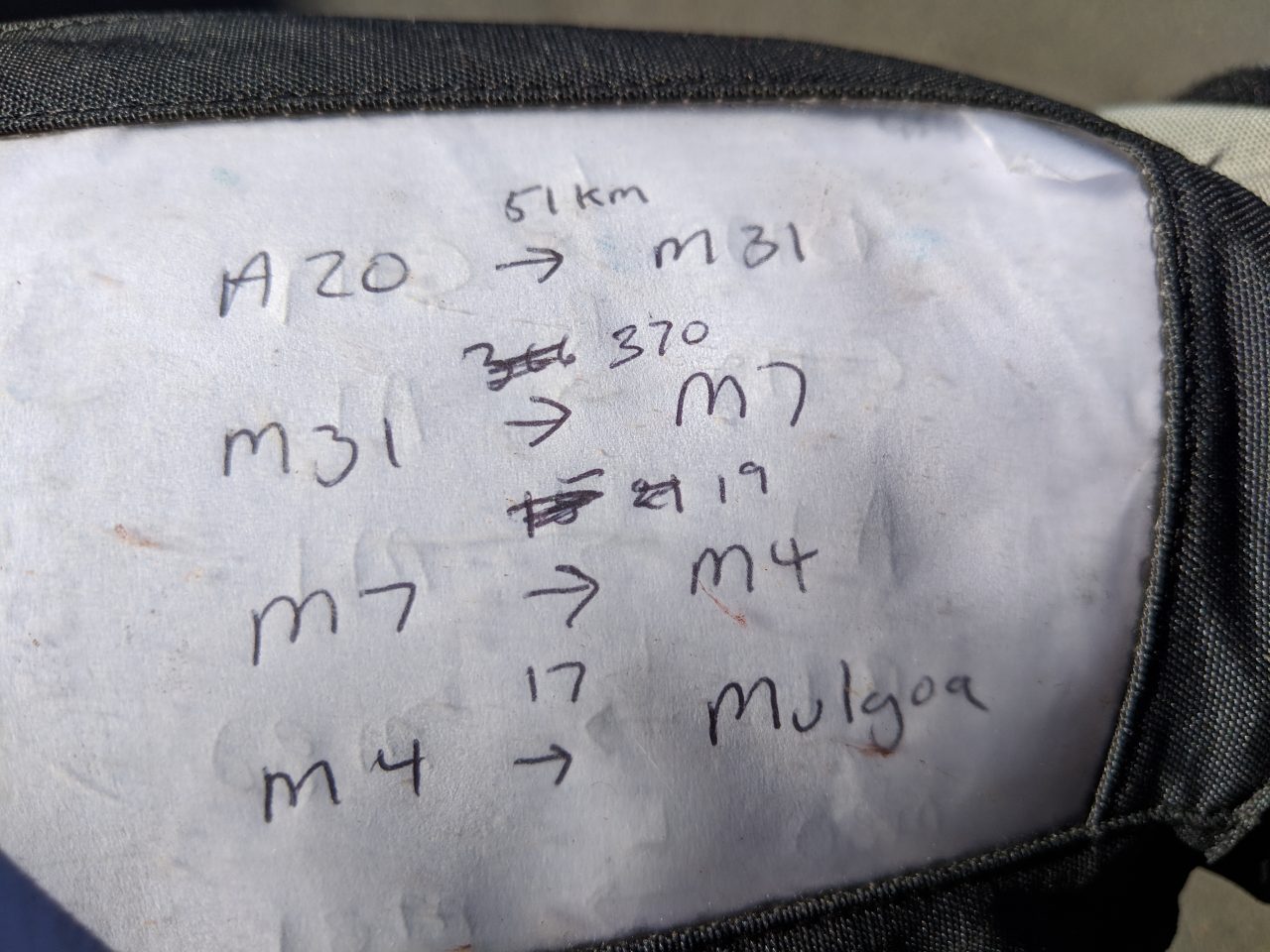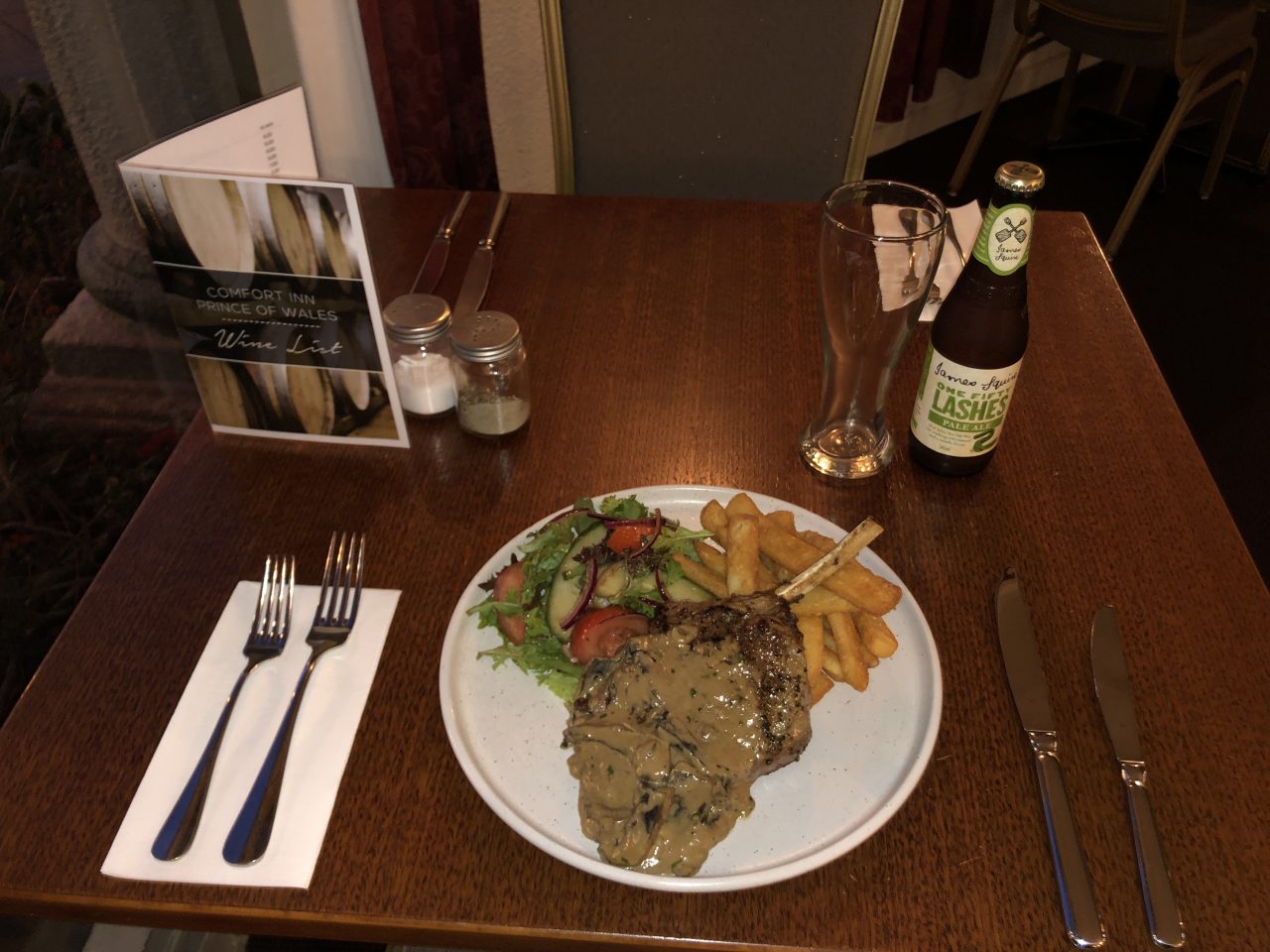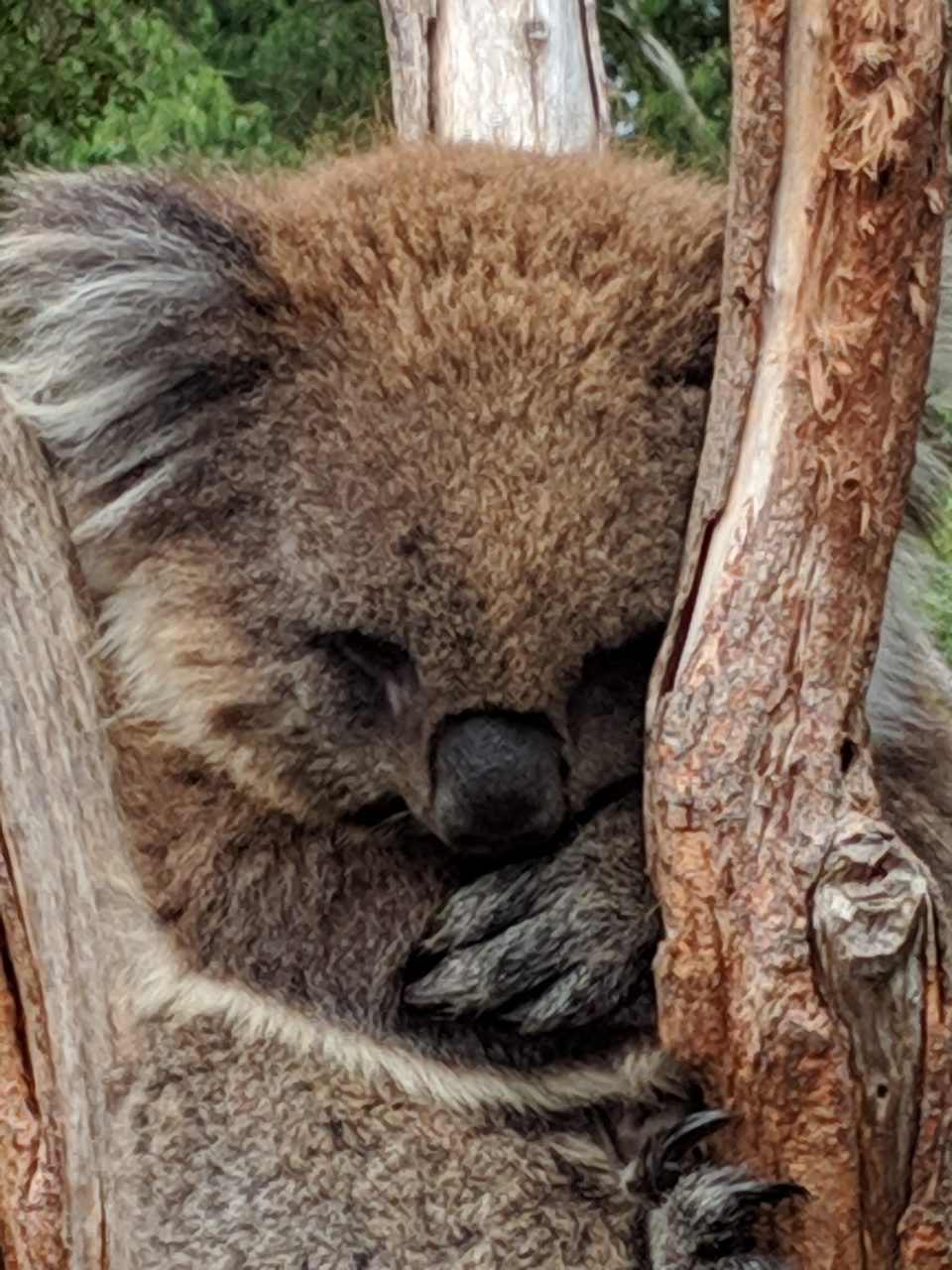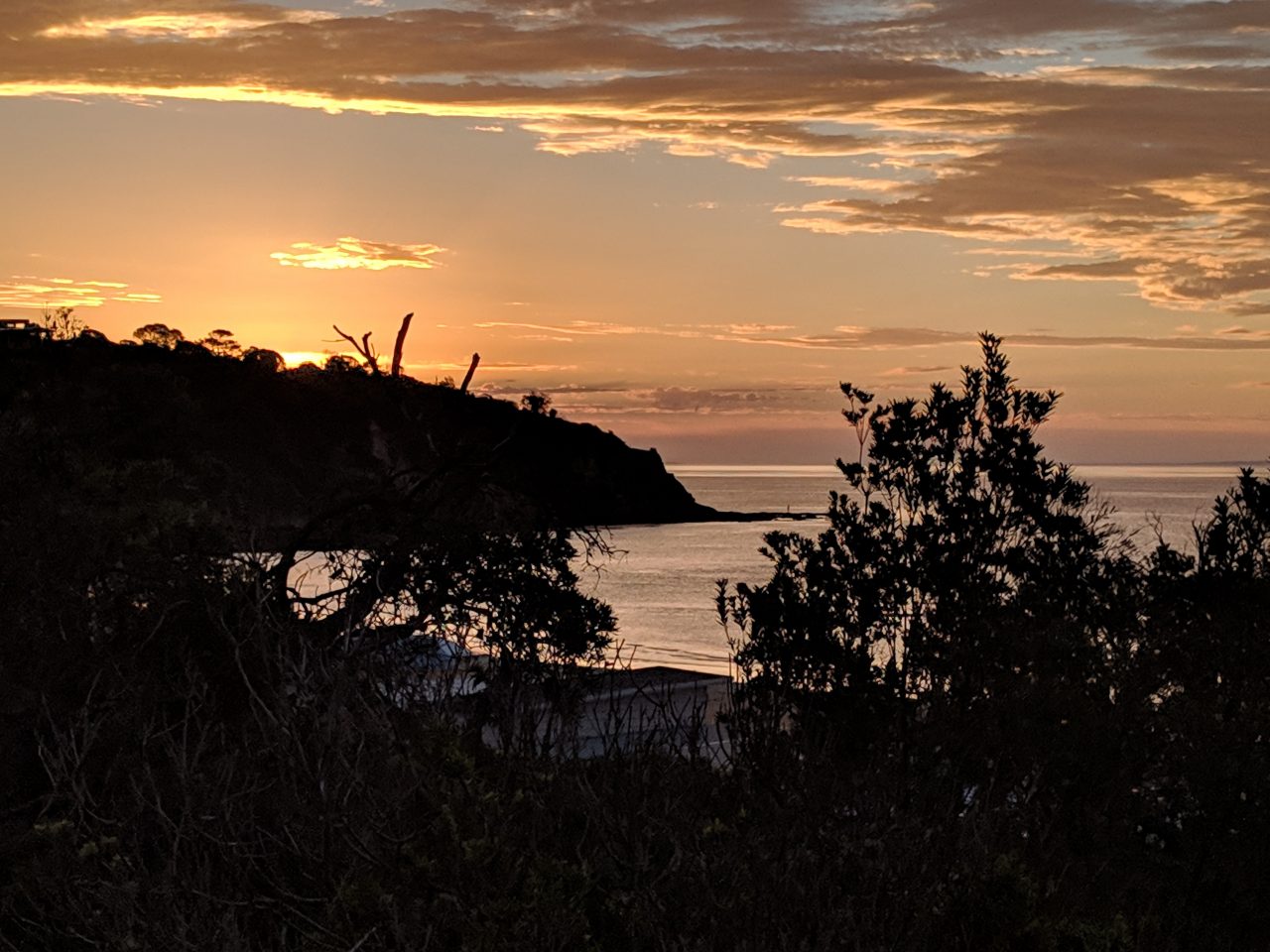Meal planning is one of the most important considerations for any trip. We all know that being hangry can derail a trip, so it’s worthwhile to take some time to explore alternatives for fast and easy food while out there on the go. And since we know that hunger sometimes strikes when we’re minimally prepared, it’s good to be knowledgeable on the high quality, shelf stable choices available to keep on hand for potential emergencies like being stranded or socked in by fast moving weather systems. Having at least three days of extra food at all times is a hard requirement for anyone traveling the back country by boots, paddles, peddles or 4WD.
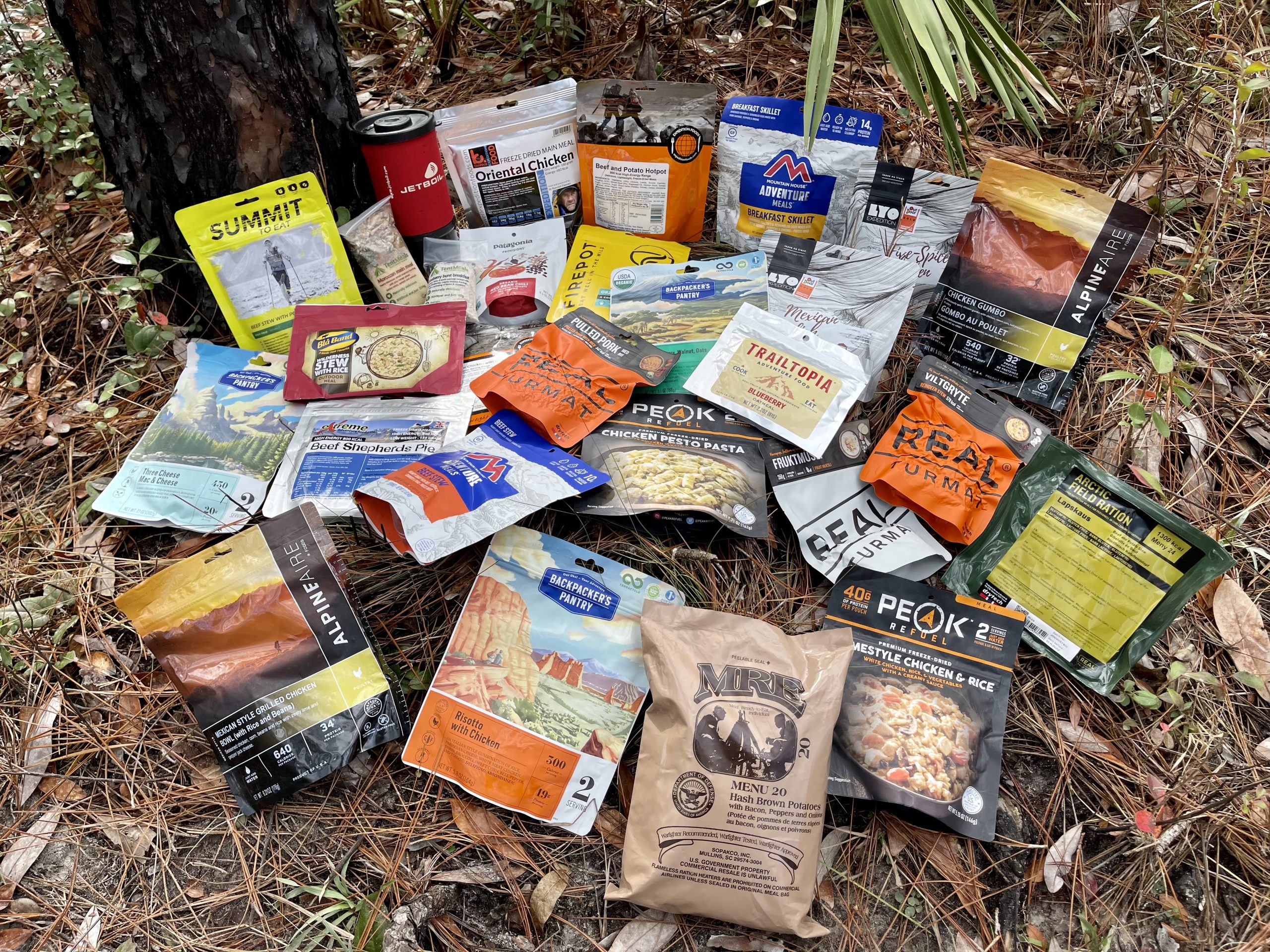
That said, over the years we’ve expended a lot of time and resources on camp cooking during our longer trips. You can bring the entire Snow Peak or Camp Chef catalog to camp, and it’s easy to invest considerable time and money on elaborate meal planning and preparation. Everybody wants to be your friend in camp when you fire it up Overland Gourmet style and start delivering the goods.
But what if you don’t enjoy hauling 150 lbs of glamping paraphernalia around in your vehicle so you can feed those pesky camp remoras again? What if you’re the camp remora this time and find yourself out of luck?
Or, what if it’s just YOU on a solo adventure?
If you’re less focused on spending time in camp fiddling with kitchen gear and cleaning, and more focused on the actual experience gained while out and about, this article is for you.
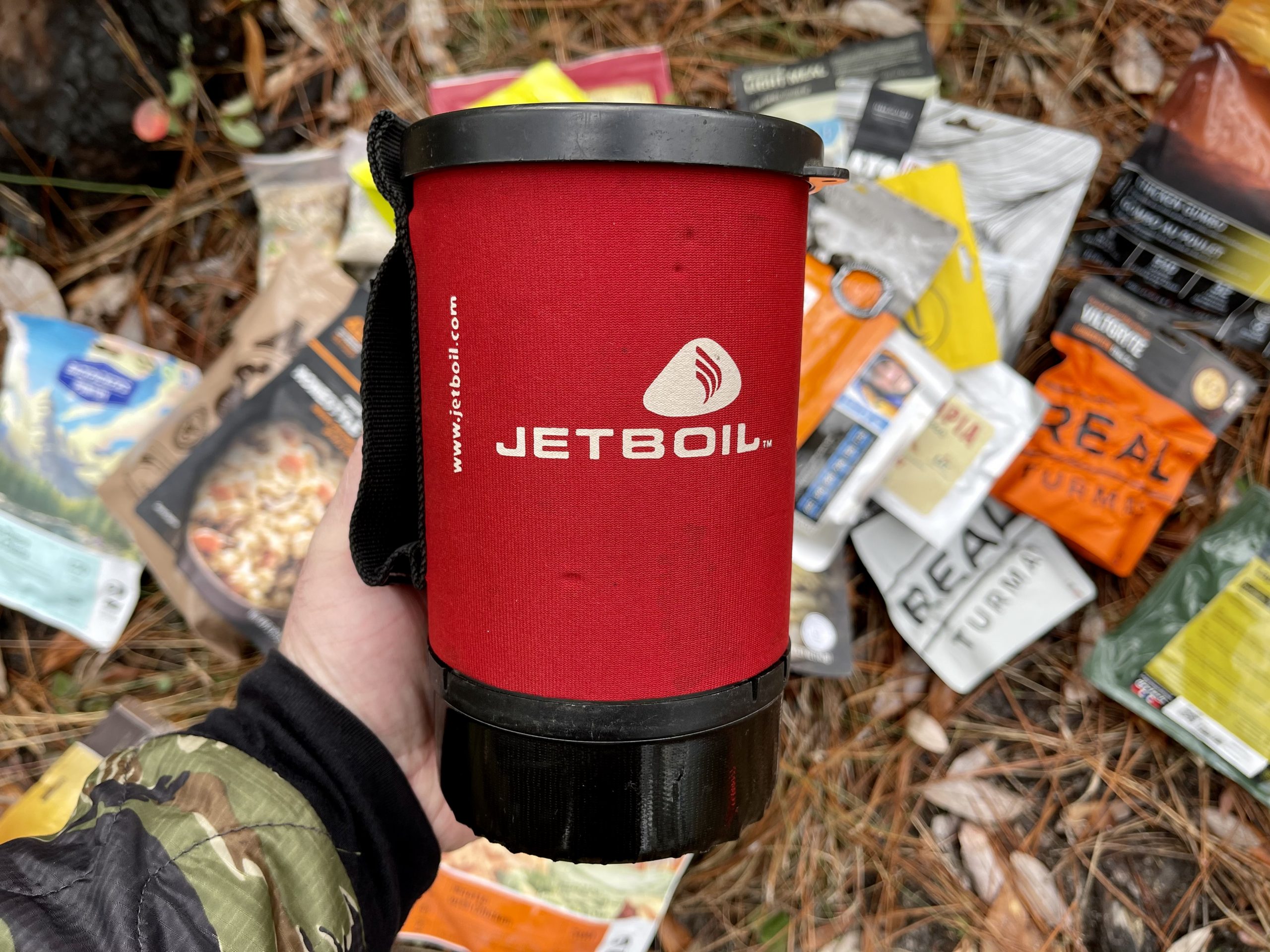
Food can be a polarizing topic. With innumerable dietary needs, opinions and preferences to consider, we’ll stick to just the basic facts here as it pertains to “hiker food”. We’ll also provide some impressions on brands and flavors etc in follow on segments here.
One argument that cannot be broken is the fact that there is no easier option. The only thing required for most of these meals is water, a way to boil it, and a long spoon.

Something thing that really interests me is how far this technology has progressed. Today’s lightweight “hiker food” tastes SO much better than it did even 10 years ago. The variety of brands and menu options has really grown as well, with everything from Kosher to Vegan to Gluten Free meals being readily available online from vendors like REI or Basecamp Food in the UK. Basecamp is my go-to source for different menus from “over the pond”. Most of the international meals you see here were sourced online from them.
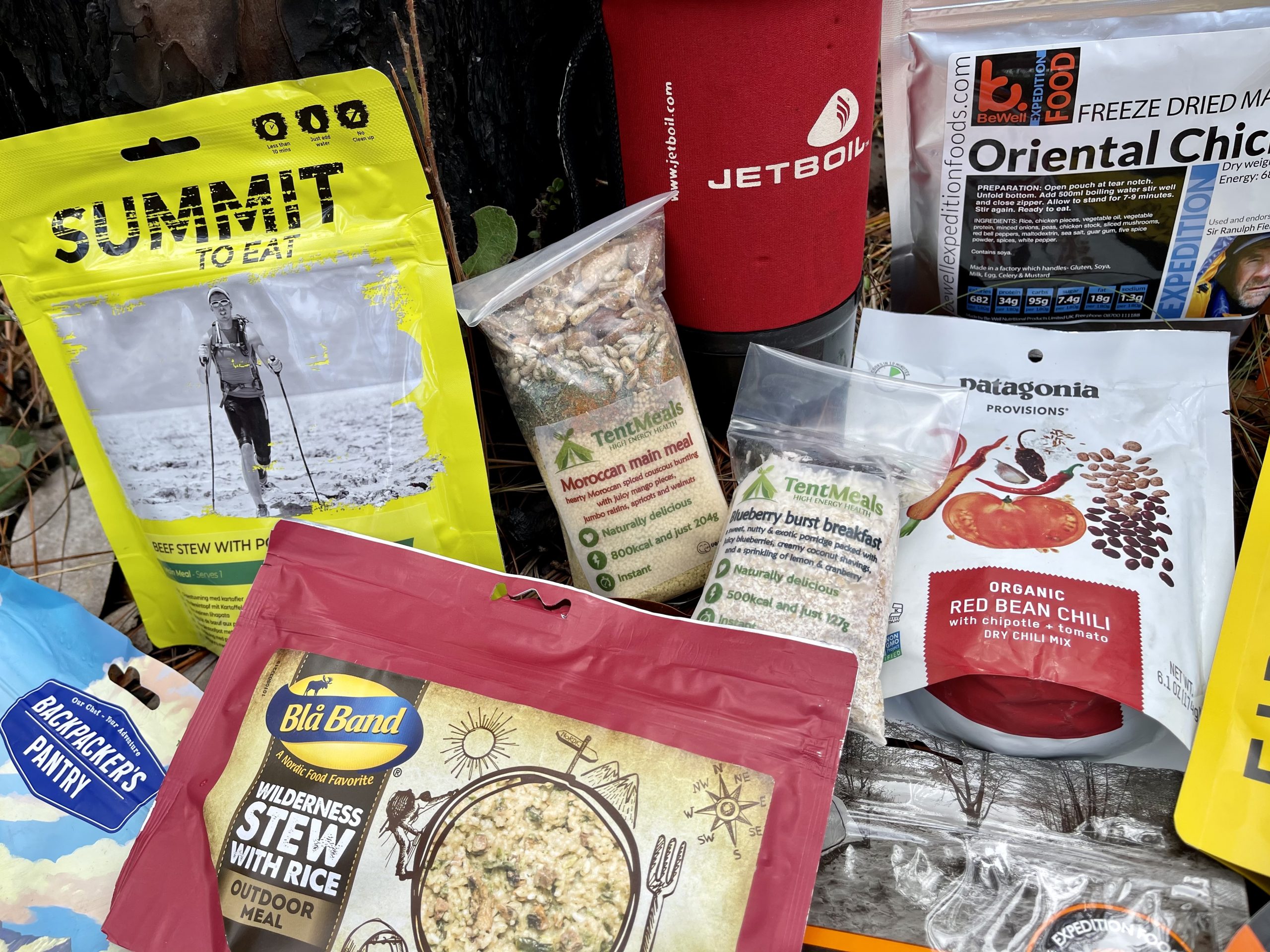
Of interest here, the market has exploded with many new offerings from the UK, Scandinavia, and here in the USA which in turn drives innovation and creates competition for legacy brands like Mountain House, the industry standard we’re all familiar with. Everyone wins when brands compete in a free market!
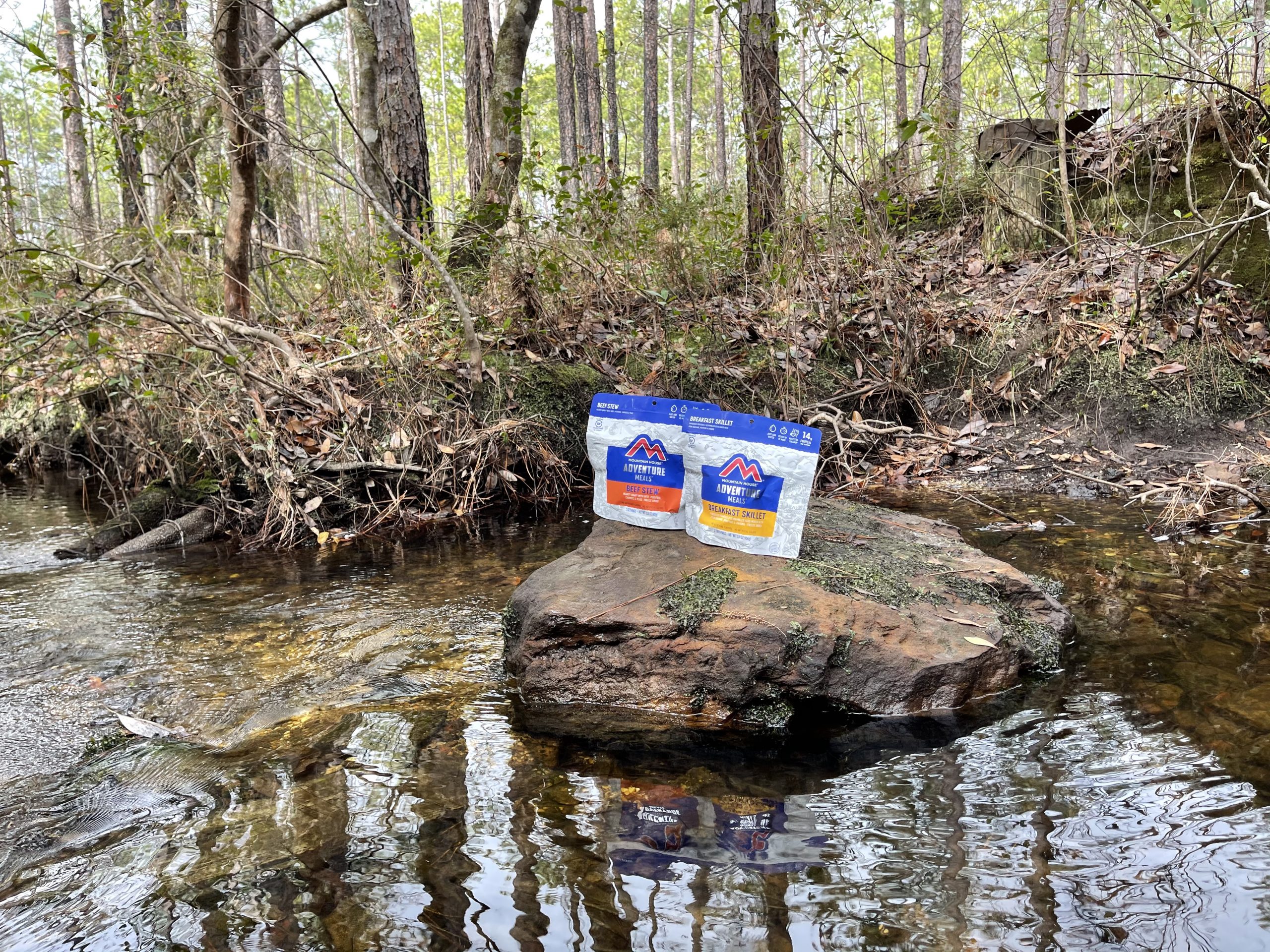
SHELF LIFE. In general, shelf life ranges from good (a few years) to amazing (decades!) on freeze dried meals from different makers. With the European varieties, shelf life tends to be decent but considerably less than the comparable American freeze dried meals. This might be due to the composition of the meals and choice of ingredients. For example, the standard Mountain House stuff is 100% freeze dried, while some of the European meals appear to use a variety of ingredients in addition to just freeze dried staples.


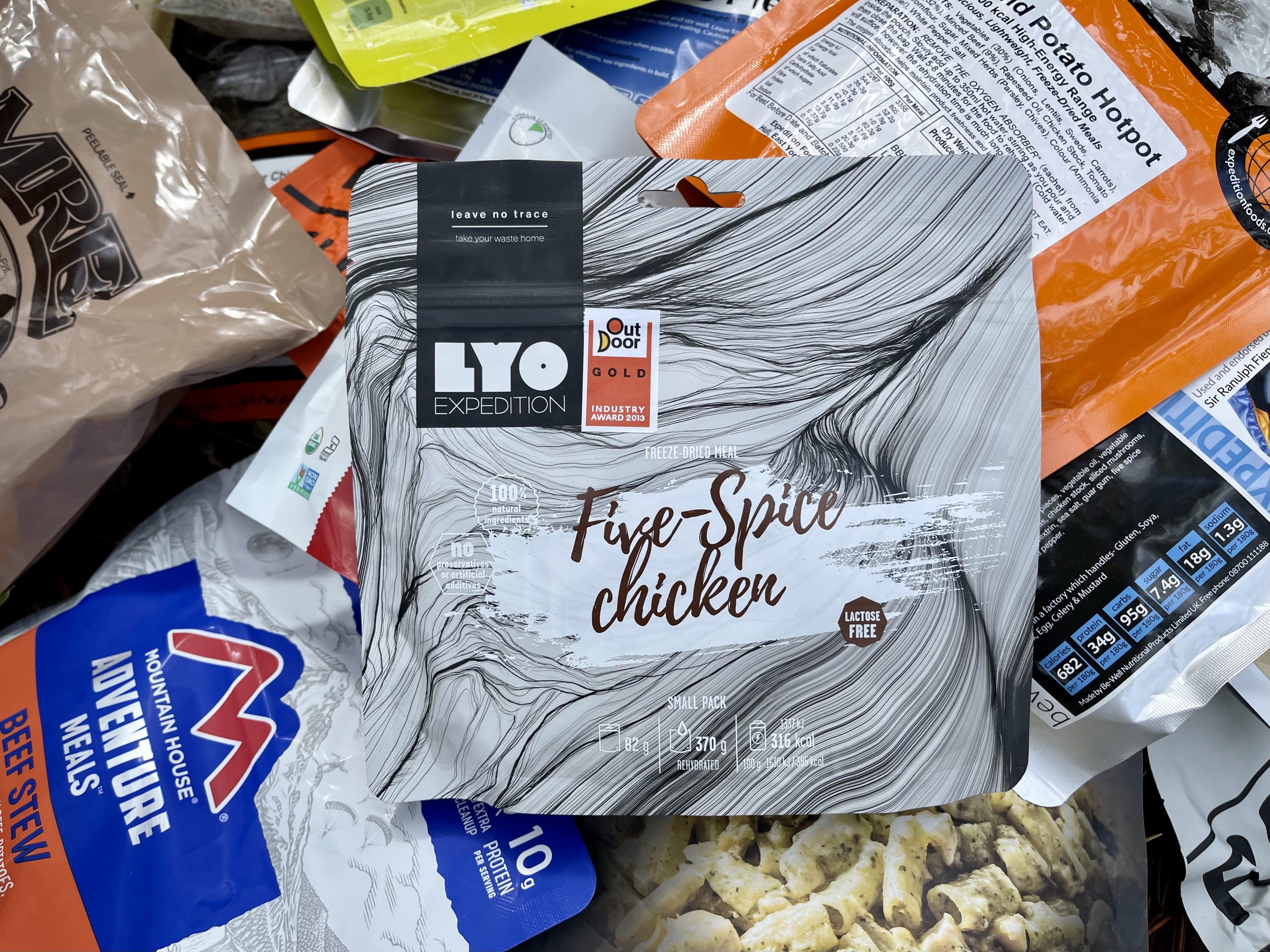
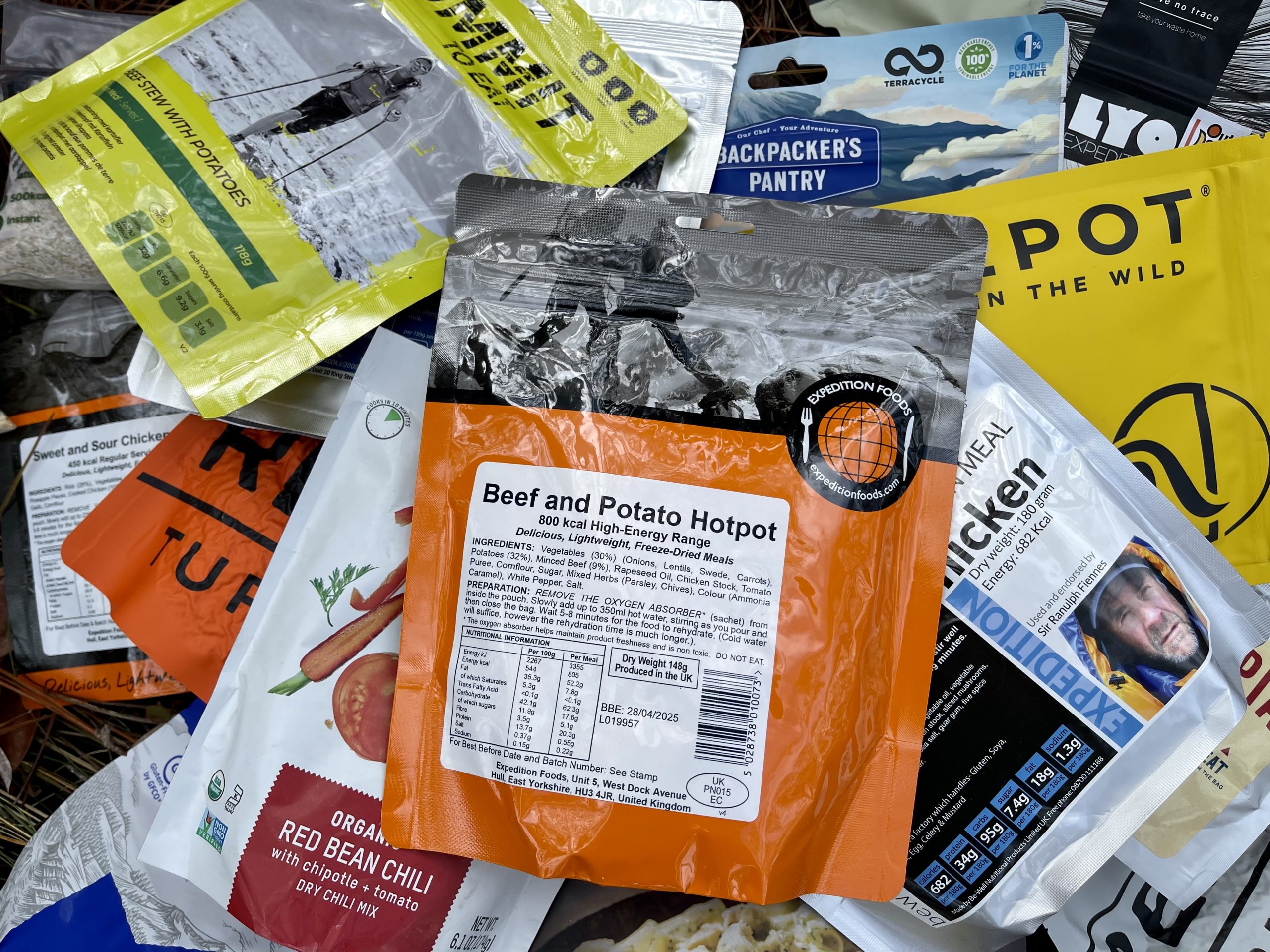


COST. Freeze dried meals can cost on average of anywhere from $7 to $12 per meal, so they’re not exactly inexpensive. You can buy a dehydrator and a vacuum sealer and DIY some stuff at home if you want, or just buy some pre-dried bulk ingredients from a grocery store. It’s easy to blend proteins, starches, and spices together to create your own tasty mash ups.
But, if your time is more valuable than your money, you’ll gladly pay for the diverse flavors and convenience seen here.


CONVENIENT CALORIES. Backpacker meals tend to be calorically dense, lightweight, and generally VERY tasty. Best of all, and an important feature when you’re physically exhausted after a long journey, they’re SO EASY to cook. Just add boiling water, wait a few minutes (patience is key), and then eat it straight out of the bag. And since no cleanup is required, you can go straight from eating out of a bag, to crawling into your sleeping bag. You can even cook and consume these meals from within a sleeping bag in inclement weather. Going to be bed with a hot meal in your belly will help you stay warmer, and that alone can be priceless.

NUTRITIOUS ENERGY. The weight to energy ratio is fairly good as freeze-drying a meal removes 80% of it’s water weight, with many meals ranging between 500-900 calories and weighing in at around 5-7 ounces. The process of freeze drying can also retain up to 90% of the nutrients which is good, but some companies have a fair amount of sodium and “other stuff” in them which may or may not concern you.
Some brands feature more natural ingredients than others, and competition is increasing in the “healthy” segment with brands like Tent Meals in the UK and Good To-Go in the US filling this important niche with clean ingredients that you can actually pronounce.
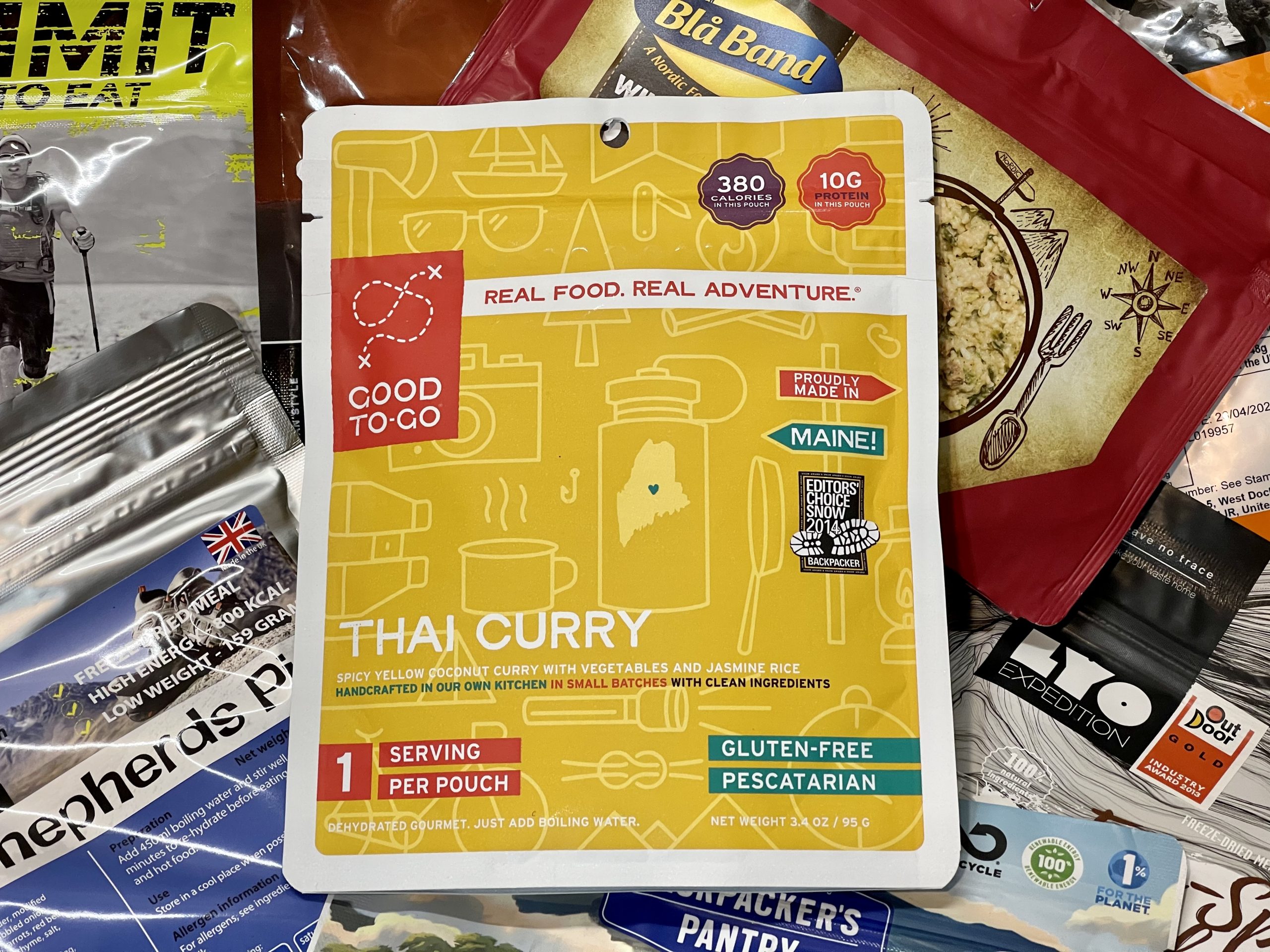
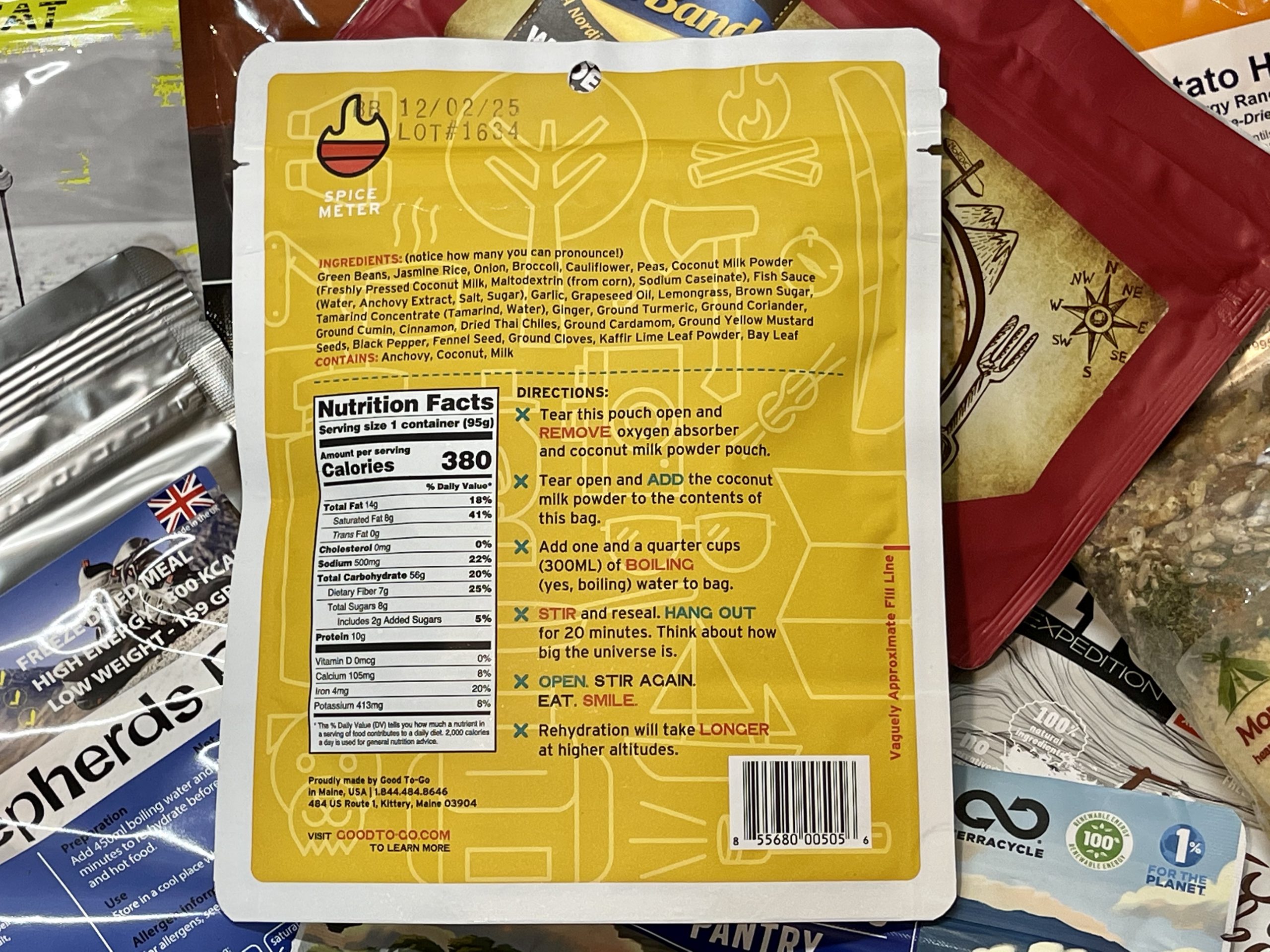

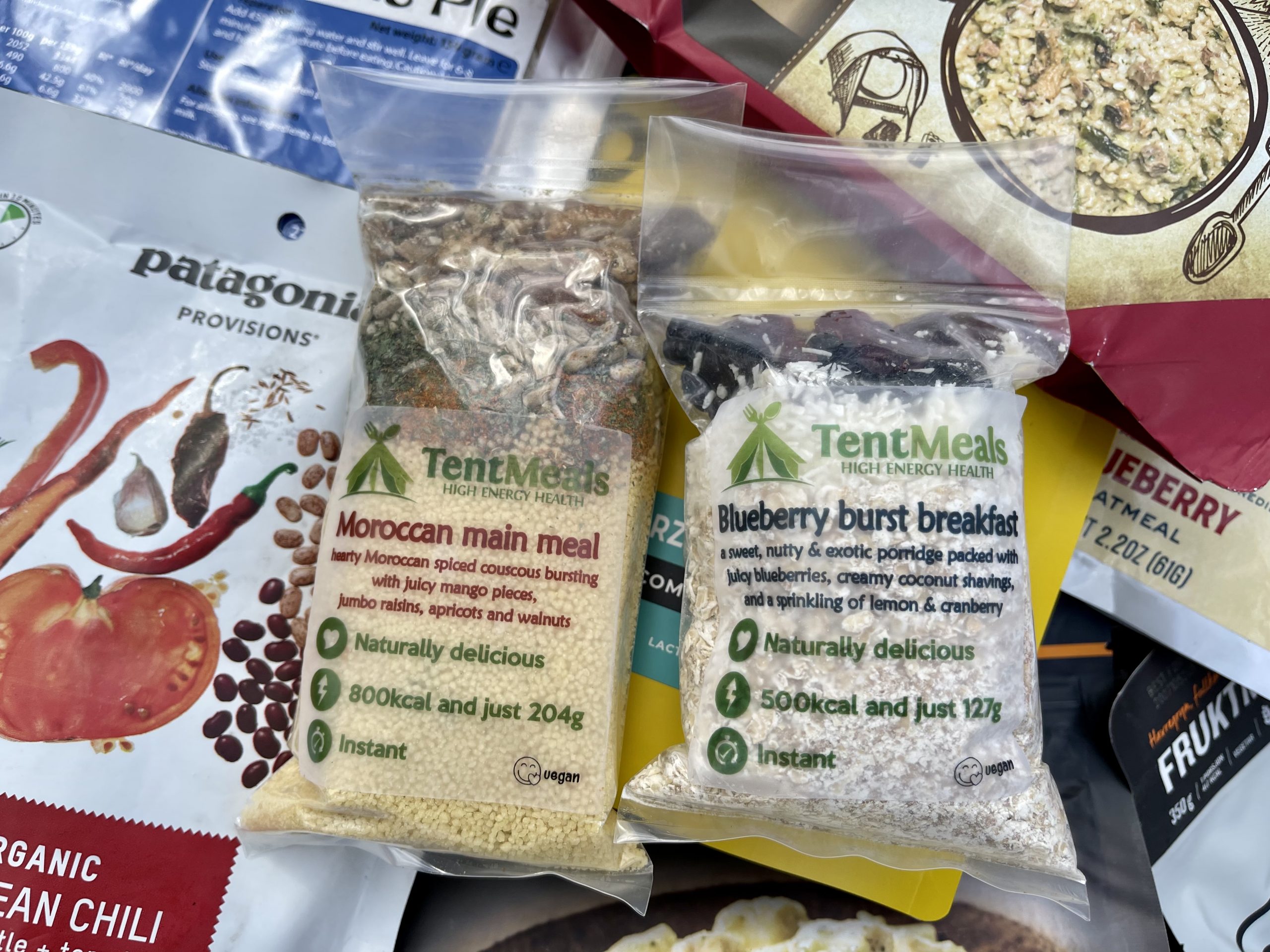
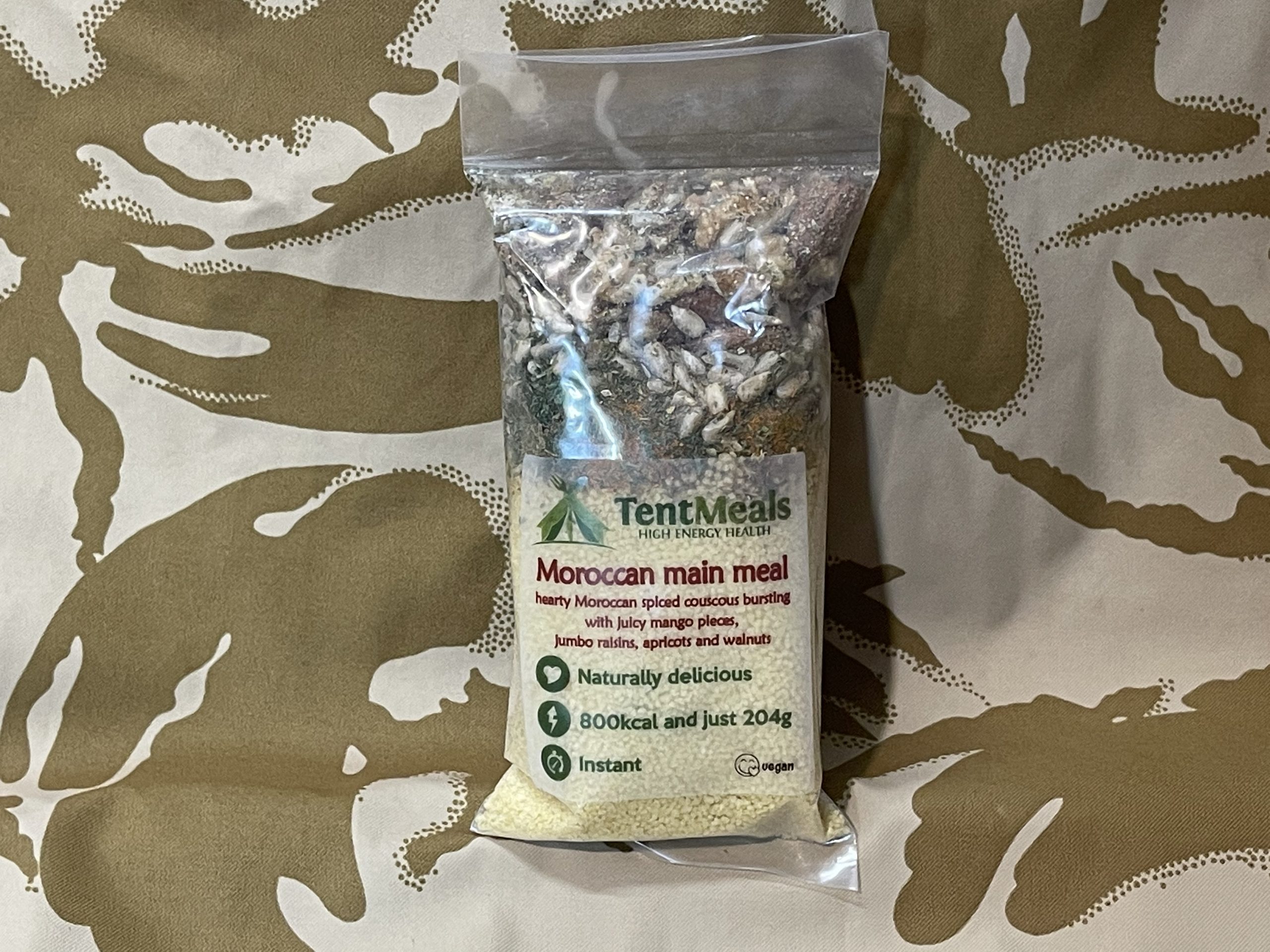

SPEAKING OF HEALTHY OPTIONS… Patagonia Provisions offers a different take on the genre by partnering with like-minded farmers, fishermen and researchers as partners in the creation of their foods. Patagonia specifies and supports “regenerative practices that restore, rather than deplete, the planet”. So if you’re looking for a tasty, sustainable, environmentally aware option Patagonia just might have what you need.
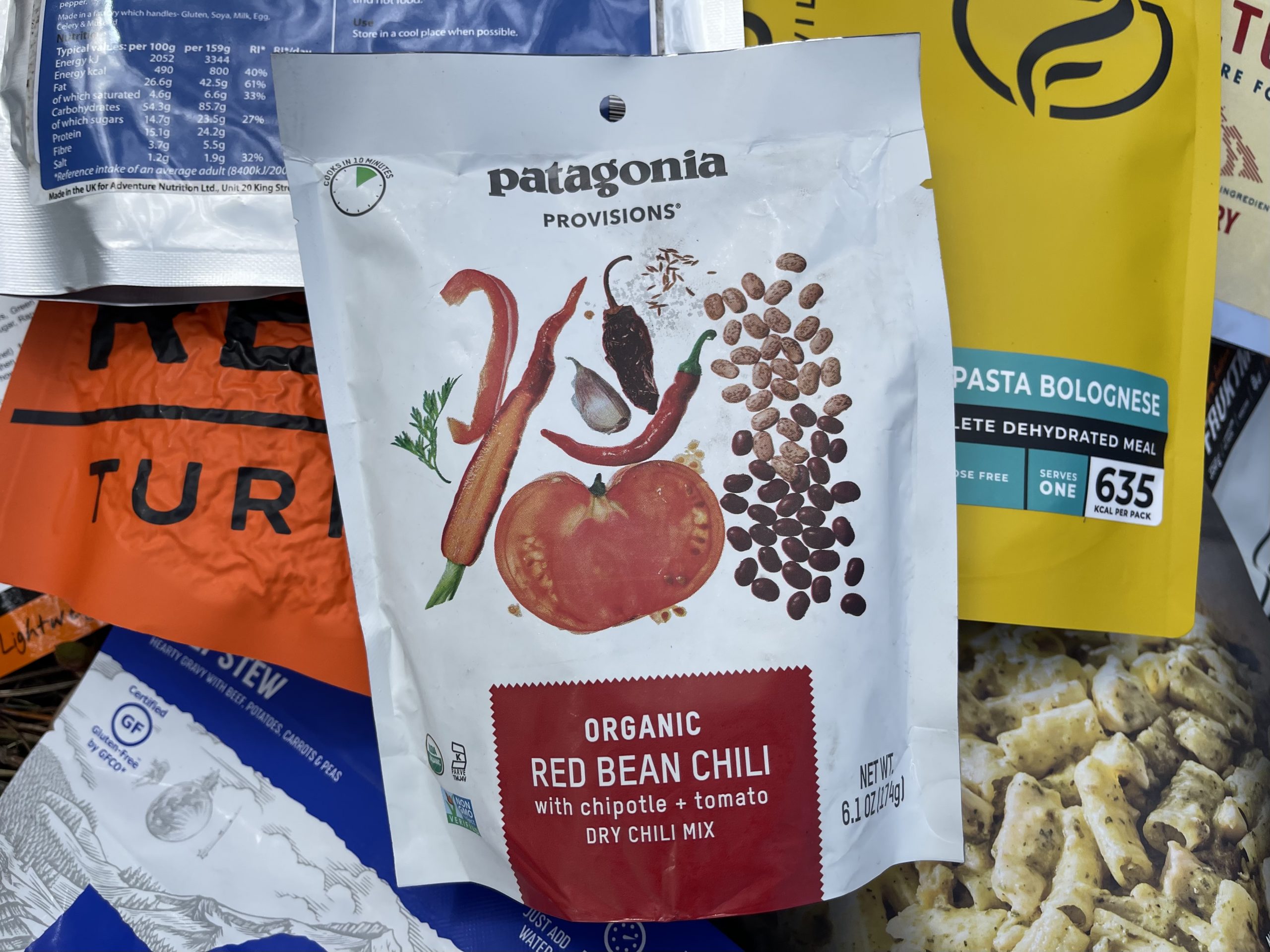
Firepot meals are handmade in Dorset, England. Their goal is meals that are nutritious, delicious and simple. And if you’re watching your salt intake, they only add salt as you would at home – very sparingly. You’ll recognize all their ingredients and you won’t find any artificial additives, flavorings or preservatives.
SPOILER ALERT: Their Orzo Pasta Bolognese is top shelf!

DON’T FORGET SPICES! Eating too much of the same things over the course of a week-long trip can wear on you. Bringing along some small packets of salt, pepper, or condiment packets like hot sauce, wasabi, or BBQ sauce can be a game changer and a BIG boost to morale at the end of a hard day.


CONSIDER YOUR BEVERAGE OPTIONS! You should try to remember to include some beverage powders etc when you do your meal planning. These little Arizona Tea “Arnold Palmer” Half and Half drink mixes are a great pick me up and long time favorite of mine, weighing in at a hiker friendly 3.3 grams each with only 10 calories and the ability to instantly transform a half liter of meh tasting water into a liquid dessert. There’s even some seriously good COFFEE options on the market today aimed squarely at the fast and light crowd. We’ll cover more on these developments in a future article.
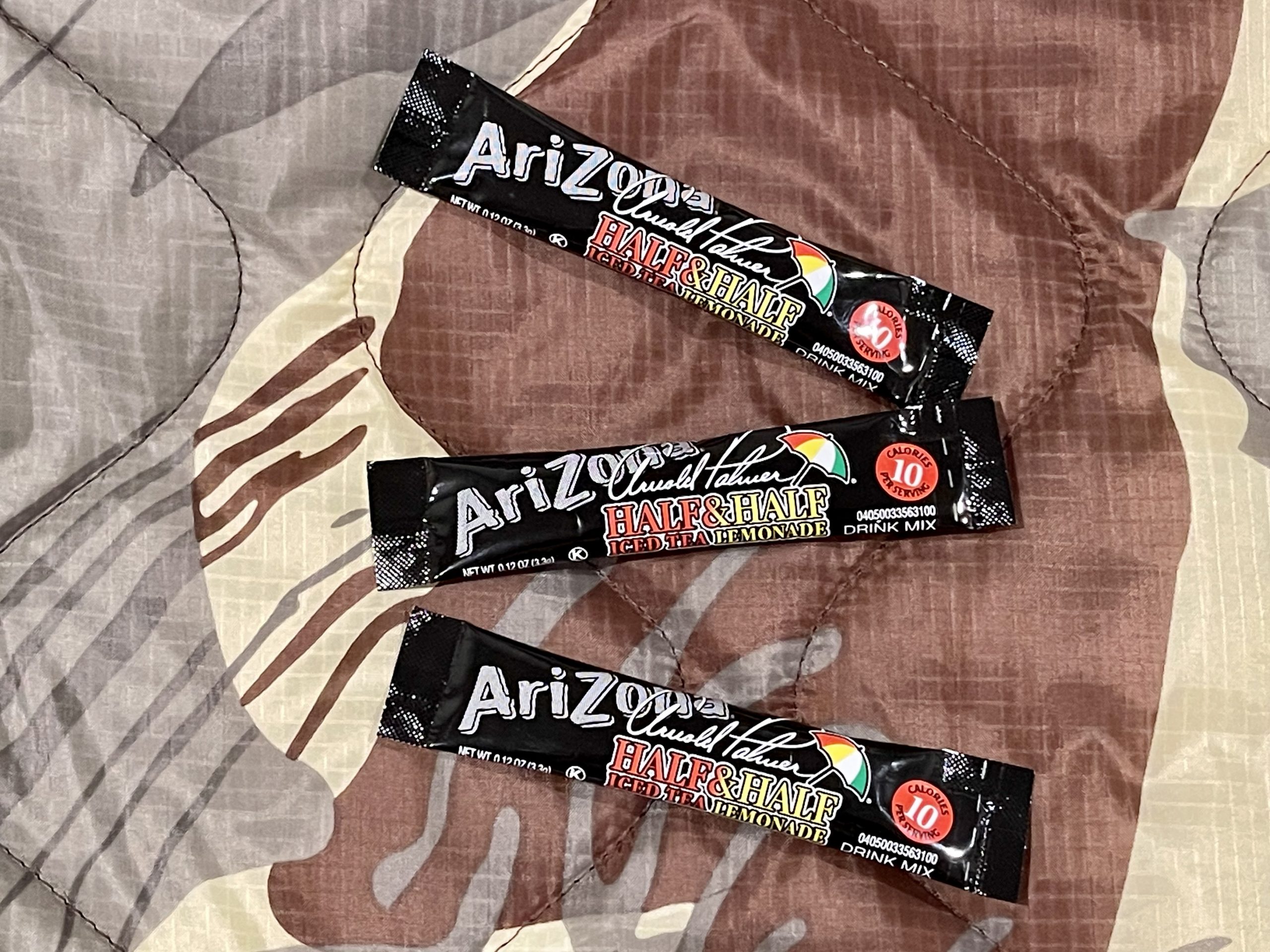
VARIETY IS KEY. You’ll want different meals when you’re out there, so make sure you include breakfast entrees in addition to the usually acceptable lunch and dinner menu items. Augmenting your meals with some fresh fruit is a nice treat that adds flavor and nutritional value to your diet as well.
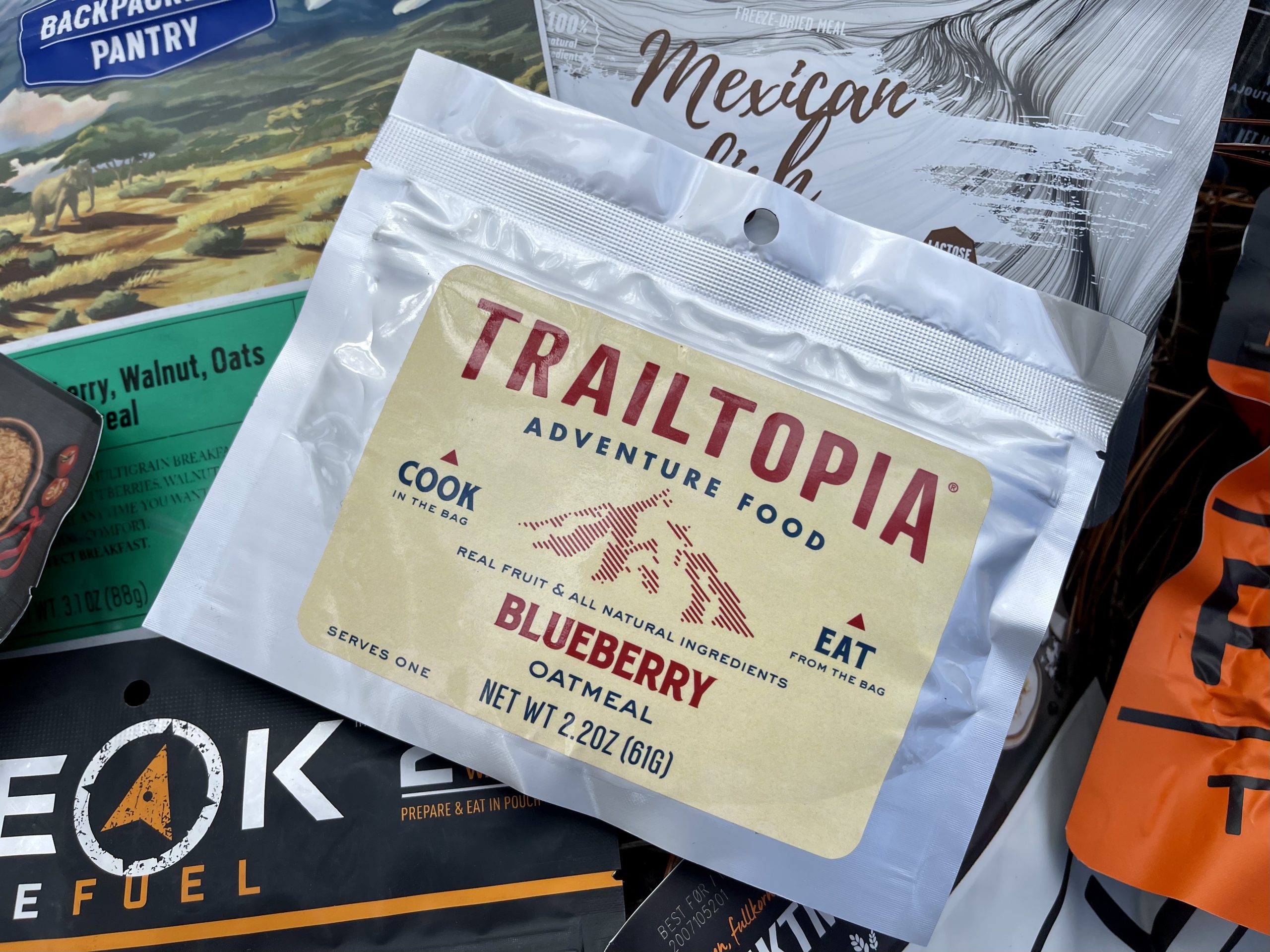
One of the other really nice things about these dehydrated meals for motorcycle, 4WD or “Overland” style trips is that they require no refrigeration, and you can augment them with virtually unlimited other standard “road trip” snacks like beef jerky, drinks and trail mixes if you’re not lugging it all on your back. But if you are hiking it all in like some of us love to do, remember “ounces equal pounds and pounds equal pain”…
… your comfort based decisions come with a cost so choose those meals and extra treats wisely!



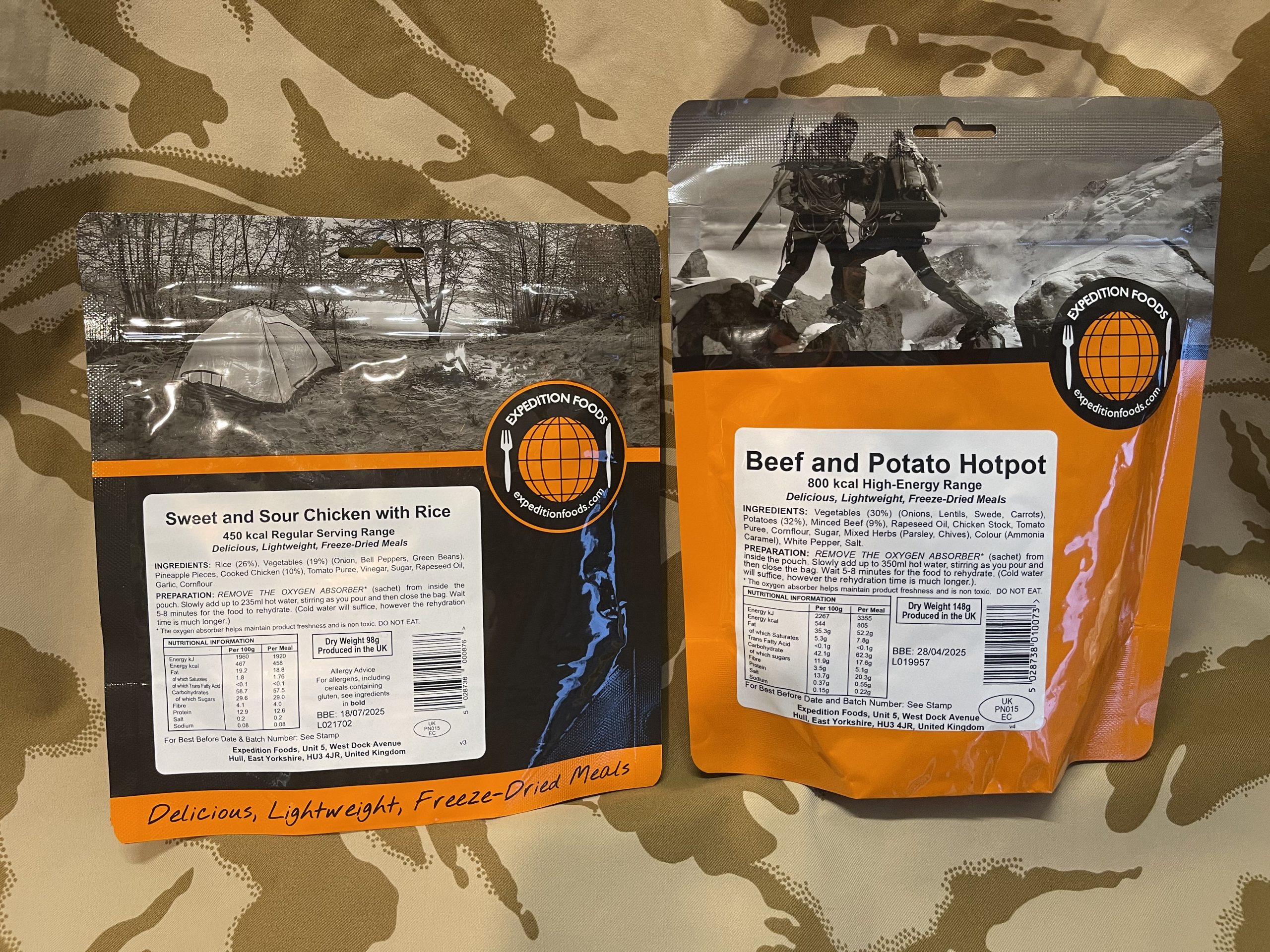

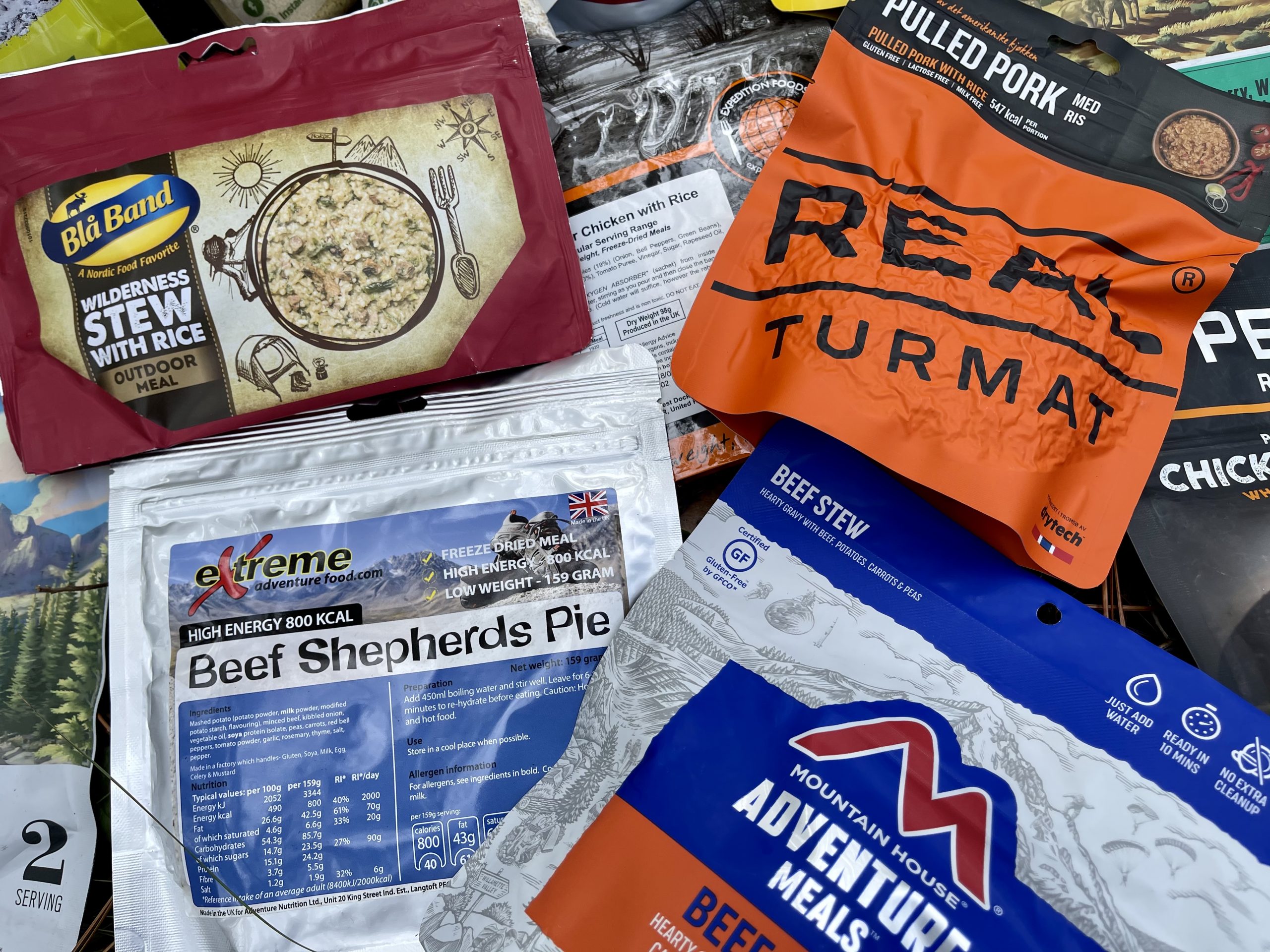

Future articles here in American Adventures magazine will talk about the flavor, texture, and overall drool factor (or the lack thereof) involved with some of these meals, and our top picks for which meals warrant an “always on hand” status in our load planning.

FULL DISCLOSURE: All endorsements and opinions in this article are unsolicited. Items featured in this article were privately purchased by the author for the sole purpose of providing honest, independent reviews to help our members eat well in the wild!
#IndependentMedia

